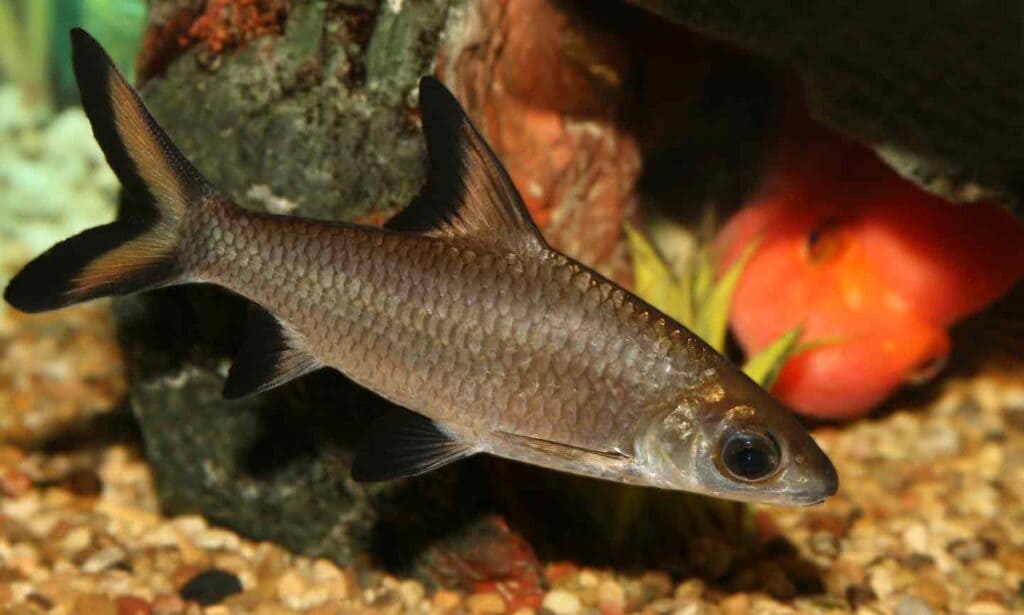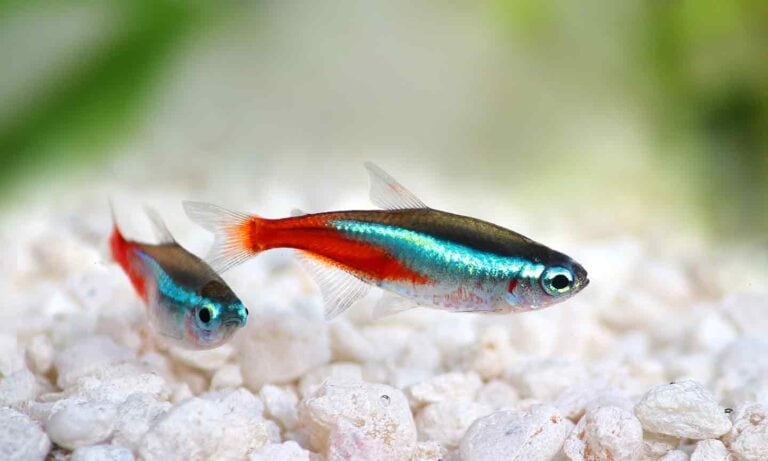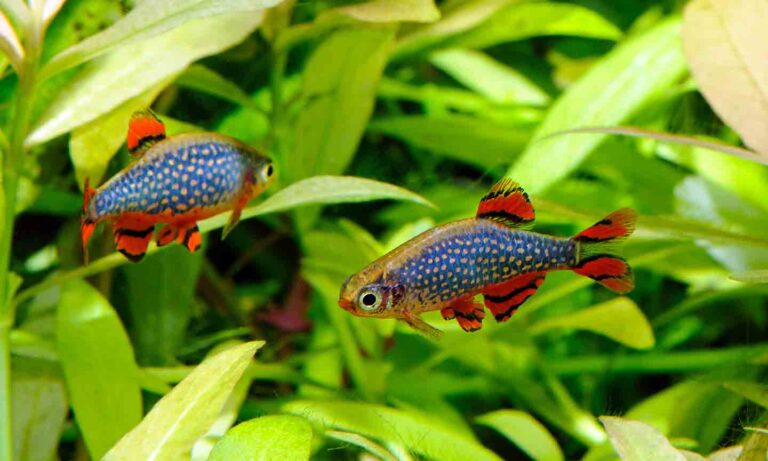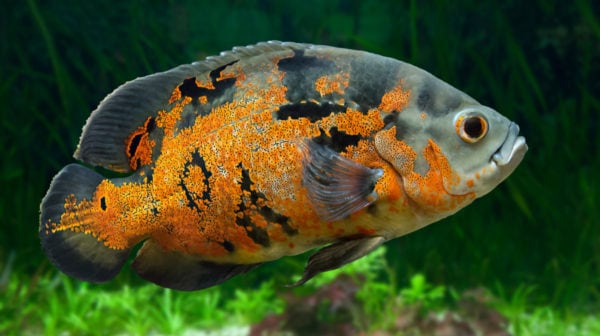For most people, the word “shark” conjures up an image of a toothy, marine predator—but for the freshwater aquarist, “shark” means something different. Despite the name and their shared need for lots of swimming space, freshwater sharks are not true sharks. They’re not close genetic relatives to marine sharks, but they have a “shark-like” body shape, angular fins, a taller-than-average dorsal fin, and often a metallic coloration.
We talked to Jessie Sanders, DVM, CertAqV, owner and chief veterinarian of Aquatic Veterinary Services, in Santa Cruz, California, about the best freshwater sharks for home aquariums.
Some words of caution before we begin: First, even the smallest freshwater aquarium sharks require a relatively large tank. Second, many species are either too aggressive for most community tanks or can grow too large for the average aquarist to maintain. Please only consider purchasing these animals after doing plenty of research and being certain you can provide them with an appropriate habitat.
The 10 Best Freshwater Sharks for Aquariums
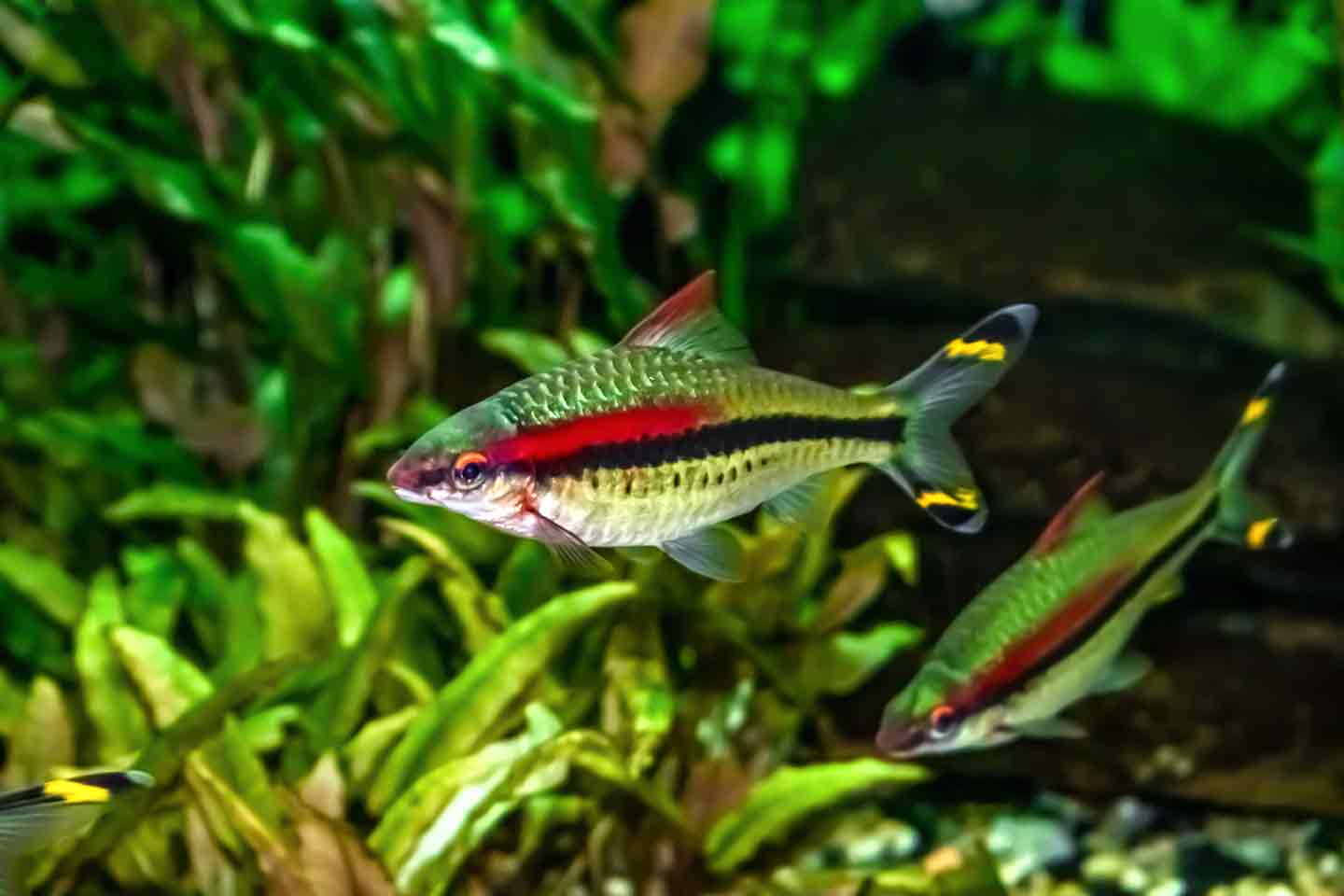
1Roseline Shark
- Scientific name: Puntius denisonii
- Size: 4–6 inches
- Lifespan: 5 years
- Best tank mates: Barbs, danios, larger tetras, rainbowfish, and small cichlids
Also called the denison barb, this fish is widely considered the best freshwater shark for beginners. These omnivores do best if kept in schools of at least six individuals and need an aquarium no smaller than 55 gallons. They have a silvery body with a black line that runs its entire length, highlighted by brilliant red accents. They are generally quite peaceful, but if crowded in too small a space can become aggressive.
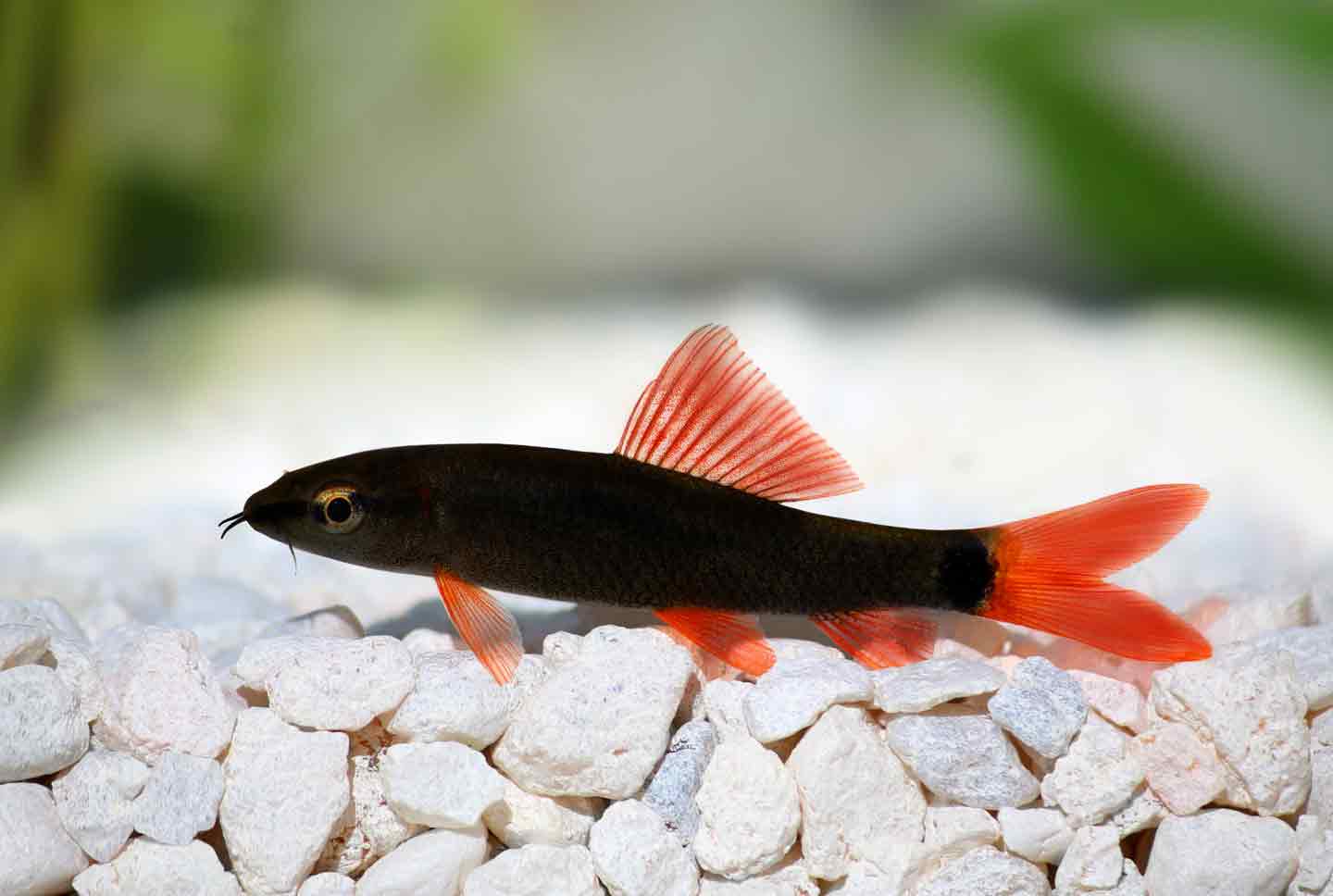
2Rainbow Shark
- Scientific name: Epalzeorhynchos frenatum
- Size: 6–7 inches
- Lifespan: 5–8 years
- Best tank mates: Barbs, danios, larger tetras, rainbowfish, and some cichlids
This beautiful species can be territorial, so it is best to keep them as a single specimen. They have a black body with bright red fins. Adults don’t exceed 7 inches in length, but still require an aquarium of 55–75 gallons. Building a community tank around a rainbow shark can be a challenge, but peaceful schooling species that occupy the top and middle of the tank (as opposed to the bottom like the shark) will fare the best.
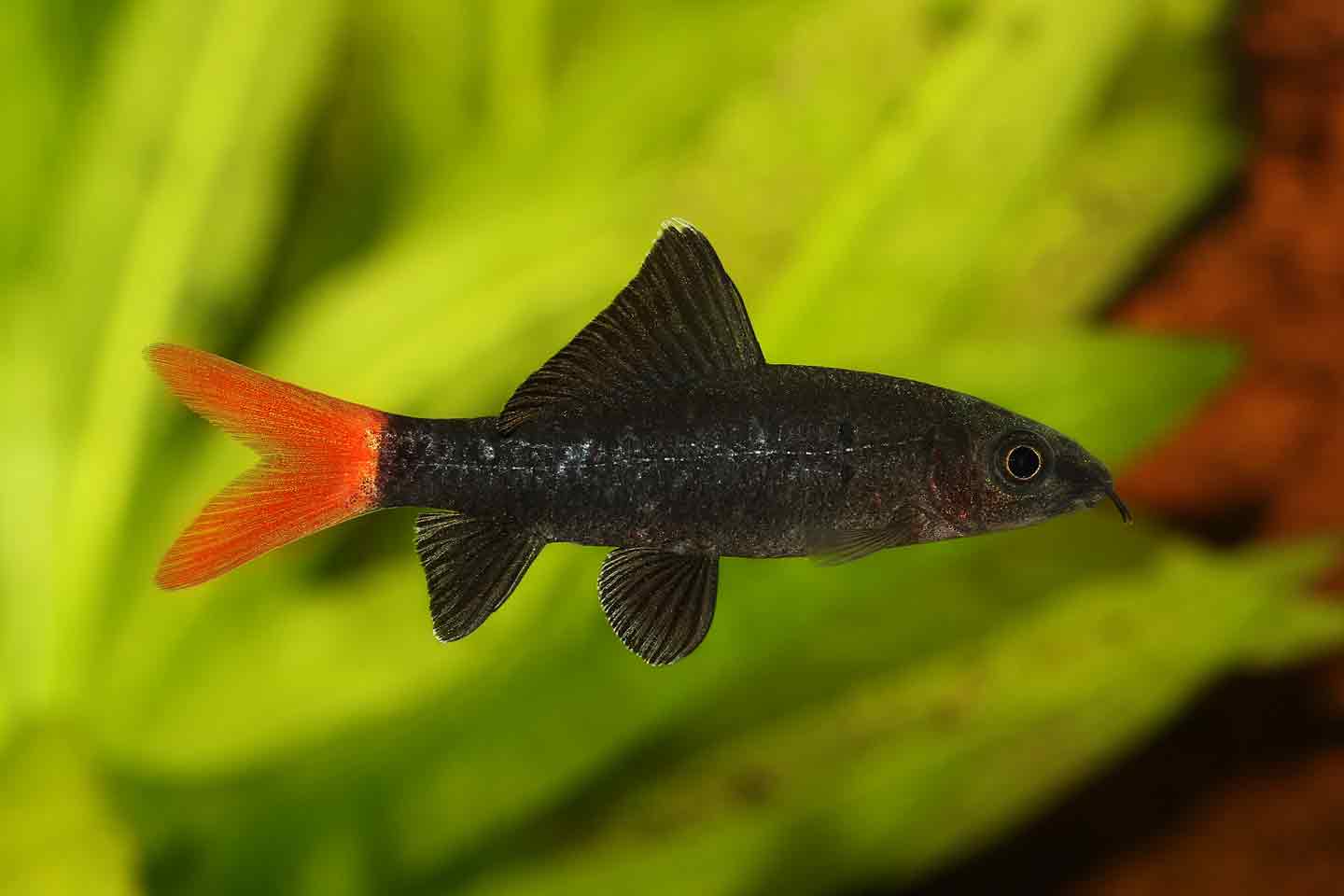
3Red Tail Shark
- Scientific name: Epalzeorhynchos bicolor
- Size: 6–7 inches
- Lifespan: 5–8 years
- Best tank mates: Barbs, danios, larger tetras, gouramis, and some cichlids
The red tail shark looks similar to the rainbow shark, except the only fin that’s red is their tail. They are also considered fairly aggressive. A spacious tank (55–75 gallons) with lots of hiding spots can minimize aggression. It’s best to keep only one specimen per tank.

4Bala Shark
- Scientific name: Balantiocheilos melanopterus
- Size: 12–14 inches
- Lifespan: 8–10 years
- Best tank mates: Barbs, danios, larger tetras, gouramis, rainbowfish, plecos, and some cichlids
Bala sharks are beautiful, silvery fish with black-tipped fins. They are shy and prone to stress if kept singly, so a small school of at least five or more is ideal. Balas get quite large and therefore need a big tank—a trio of bala sharks shouldn’t be housed in less than 180 gallons, and the greater the volume the better.
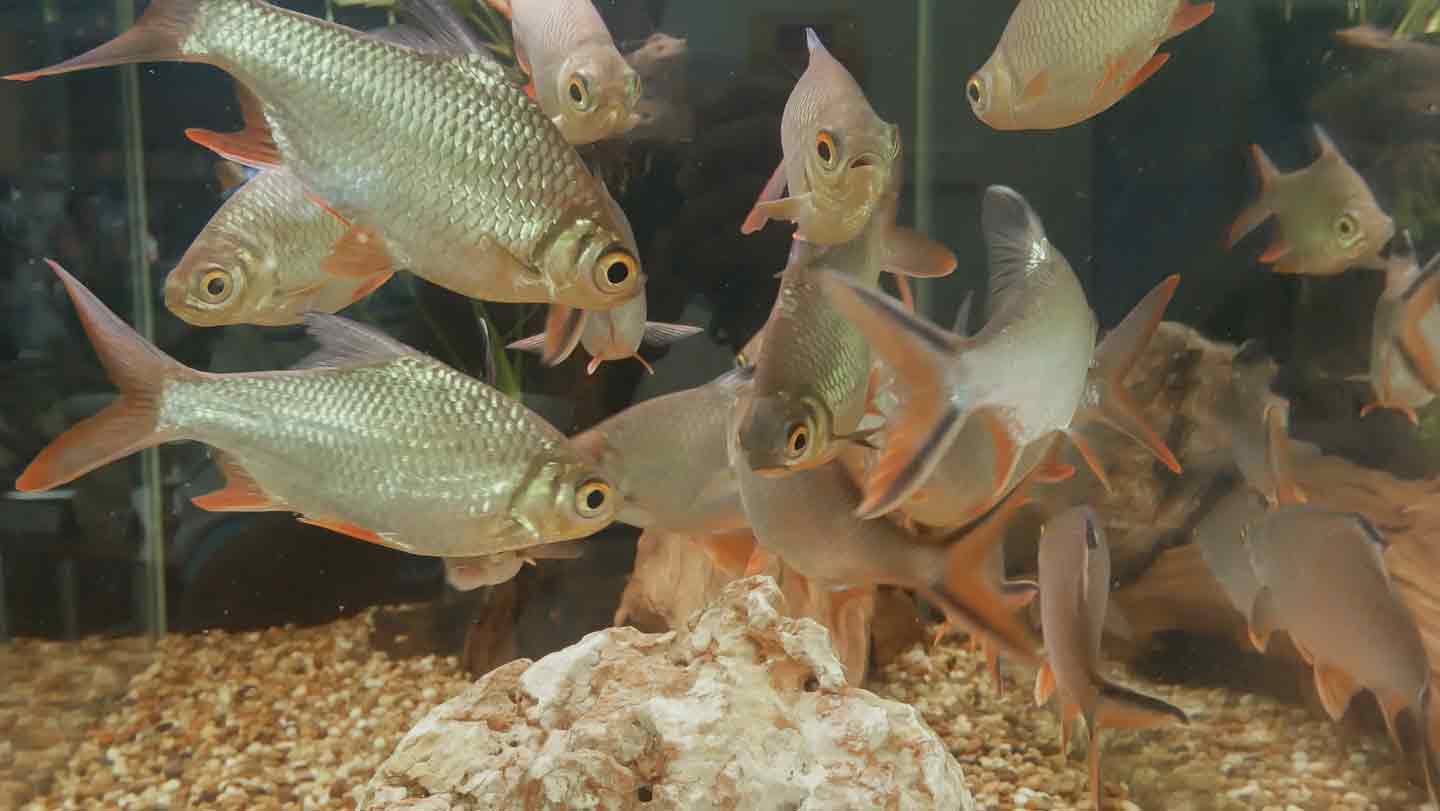
5Tinfoil Barb
- Scientific name: Barbonymus schwanenfeldii
- Size: 8–14 inches
- Lifespan: 10+ years
- Best tank mates: Other barbs, gouramis, loaches, plecos, and large cichlids
This is a shoaling species that prefers to live in groups of six or more, and considering their adult size of more than a foot, the absolute minimum tank size is 180 gallons—with 350 gallons being more appropriate. They are not aggressive and mix well with medium-sized fish of a similar temperament, but they will eat small fish.
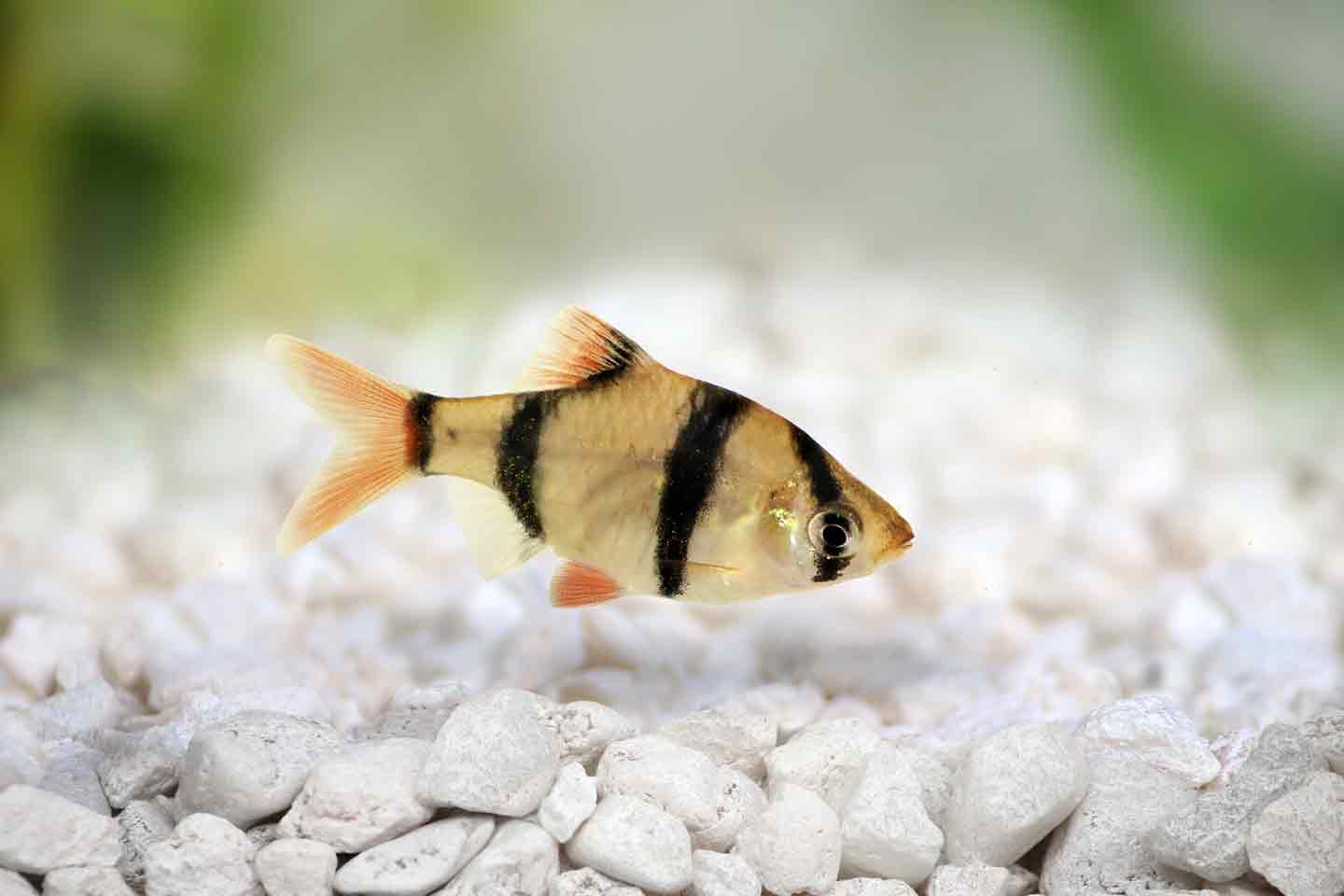
6Tiger Barb
- Scientific name: Puntigrus tetrazona
- Size: 3 inches
- Lifespan: 5–10 years
- Best tank mates: Other small barbs, corys, small to medium tetras, and plecos
One of the best-known and most readily available barbs is this small, beautiful, shoaling fish that remains relatively non-aggressive if kept in groups of at least eight. These fish are extremely active and prefer lots of swimming space, so a 20-gallon or bigger tank is best.
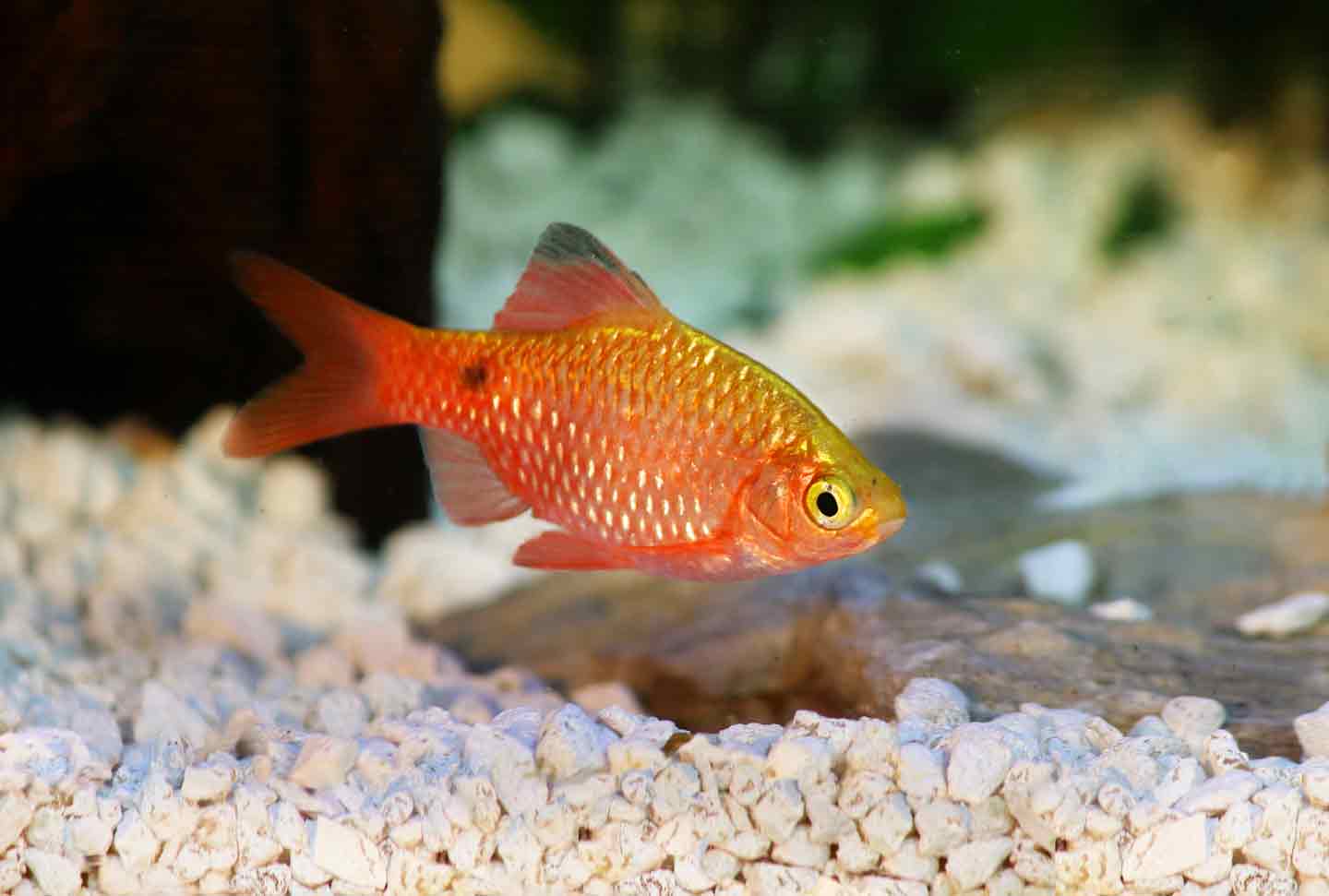
7Rosy Barb
- Scientific name: Pethia conchonius
- Size: 6 inches
- Lifespan: 3–5 years
- Best tank mates: Community fish like other small barbs, danios, gouramis, corys, small to medium tetras, and plecos
This is a colorful, peaceful cyprinid that’s best kept in a group of at least five. A 30-gallon tank is the minimum size for a group of eight rosy barbs, and you’ll need an even larger tank if you have more fish. These hardy, easy-to-keep fish are a great community species and do well with nearly any other peaceful fish, though long-finned species will likely get nipped by them.
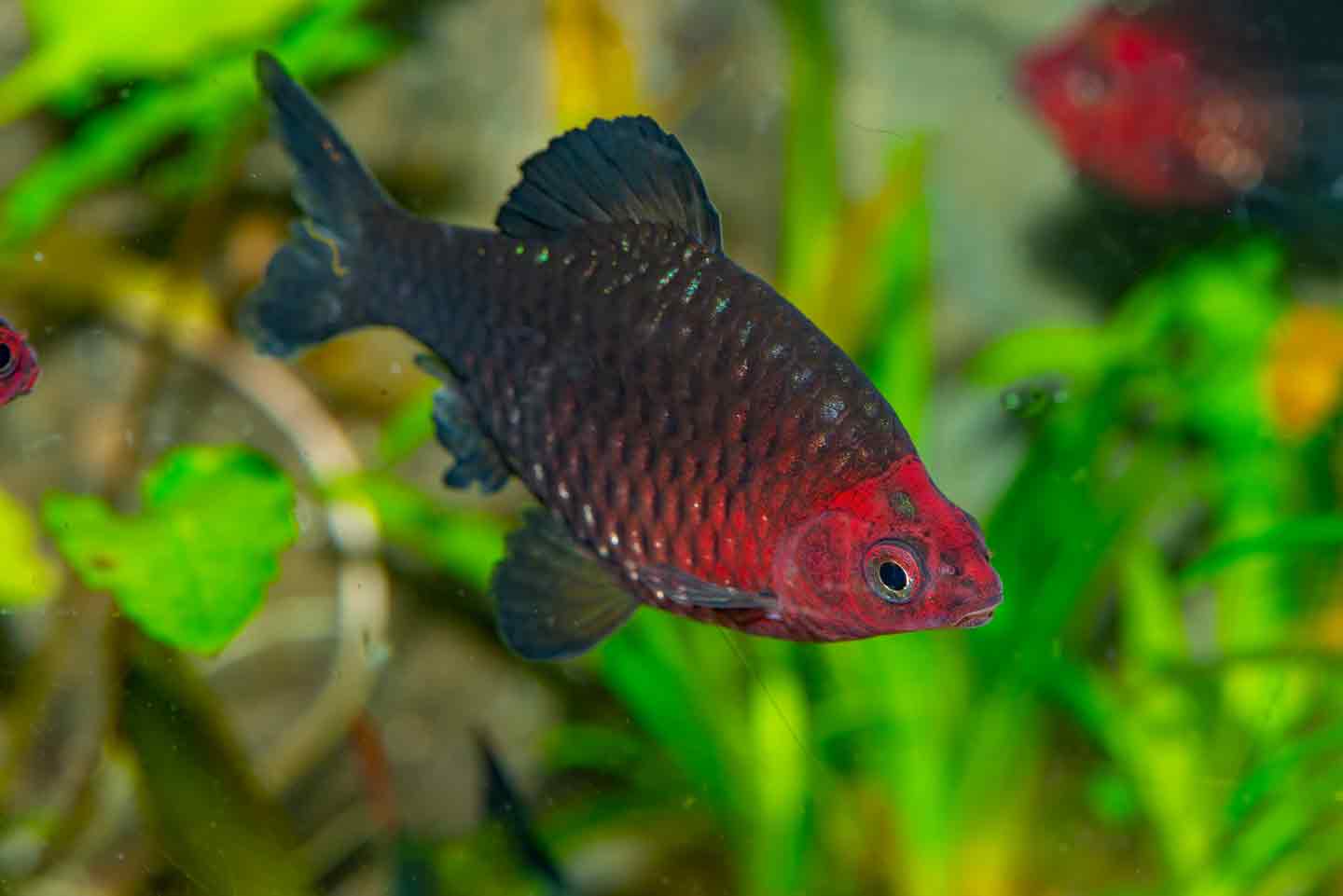
8Black Ruby Barb
- Scientific name: Pethia nigrofasciata
- Size: 3 inches
- Lifespan: 3–5 years
- Best tank mates: Other barbs, gouramis, tetras, danios, and catfish
The black ruby barb, aka purple-headed barb, is a gorgeous aquarium fish that makes a great addition to many community tanks. Providing plenty of space (a minimum of 30 gallons) and keeping them in groups of six or more will reduce aggression. Like most barbs these fish are omnivores, and they like to graze on algae and detritus on the bottom.

9Sunset Barb
- Scientific name: Pethia setnai
- Size: 2.5 inches
- Lifespan: 3–5 years
- Best tank mates: Other barbs, gouramis, tetras, danios, and catfish
This is a shy and peaceful fish that is best maintained in groups of six or more. They should not be housed with boisterous species, but will thrive in a calm community aquarium. Fish with long fins should be avoided due to the nipping tendencies of these small barbs.
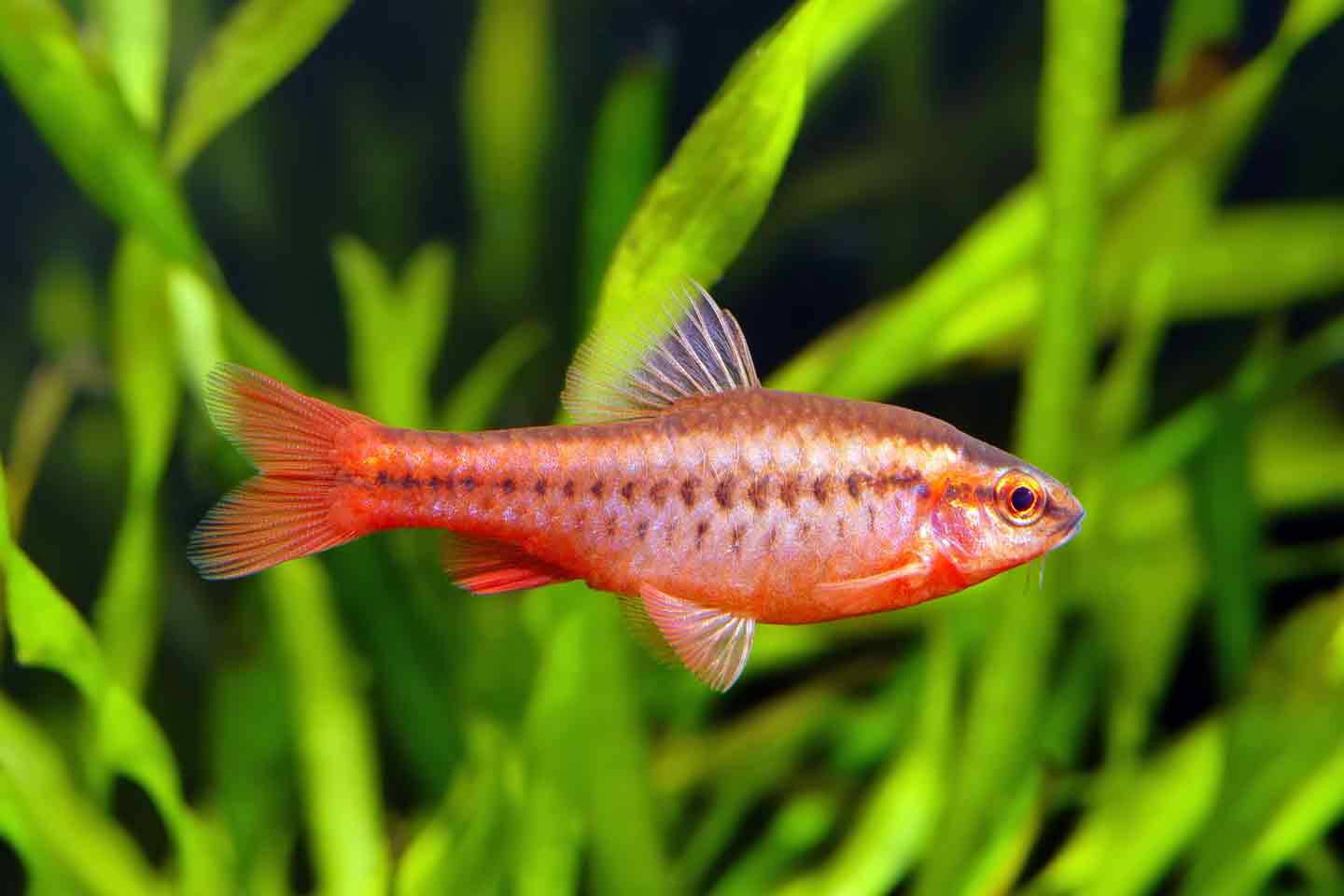
10Cherry Barb
- Scientific name: Puntius titteya
- Size: 2 inches
- Lifespan: 4–6 years
- Best tank mates: Danios, loaches, corys, plecos, gouramis, tetras, and other barbs
This barb is a great choice for those who want the look and movement of a shark but on a small scale. A school of at least five of these red beauties can be kept in a 20-gallon tank, but due to their active nature, they’ll appreciate all the additional space you can give them.
FAQs About Fish Tanks With Sharks
Q:What does a freshwater shark eat?
A:Freshwater sharks tend to be omnivorous. As grazers, they spend a lot of their time eating algae off the substrate and other surfaces while also picking up bits of food that have settled on the bottom or in rock crevices. They will thrive on a varied diet that includes dried and fresh foods.
Q:How do you set up a shark tank aquarium?
A:You will first need to decide what size aquarium you can manage, and then choose an appropriate shark species. Filtration is key, as freshwater sharks need extremely clean water conditions, so you will want a filter that is oversized for your tank volume. Heavily planted tanks, or at least tanks that have areas of dense plant growth, will help deter aggression.
Expert input provided by Jessie Sanders, DVM, CertAqV, owner of Aquatic Veterinary Services, in Santa Cruz, California.
This content was medically reviewed by Chewy vets.
Share:
